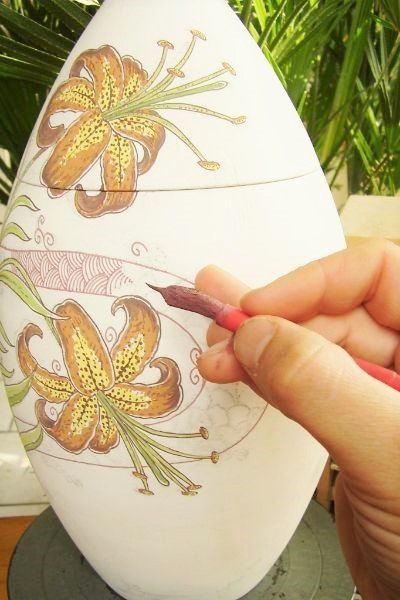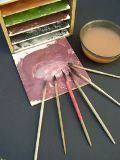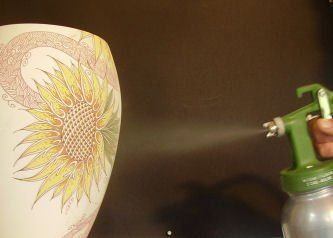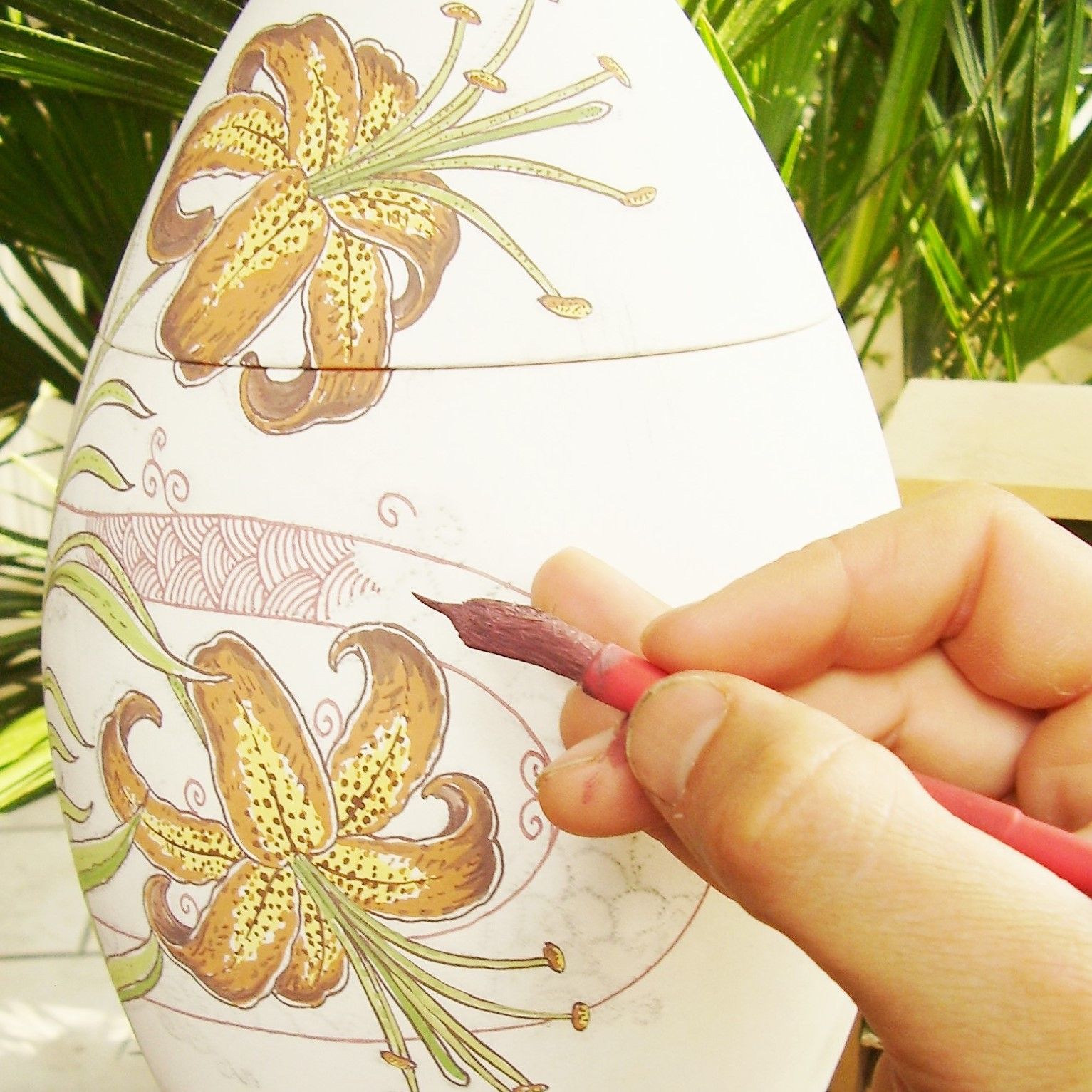About us:
Michael van de Sande, founder of the studio of Phoenix Urns ® , had his education as a ceramic painter artist at the world famous Royal Delftware Factory "De Porceleyne Fles Anno 1653" in Delft (The Netherlands).
He also studied "Graphic and Typographic Design" at the "Royal Academy of Fine Arts" in The Hague.
From 1992 to 2004 he then worked as a ceramic painter / designer at the smaller pottery factory "De Delftse Pauw".
In 2004 the artist opened his own studio under the name "Lotus Ceramic Arts / Phoenix Urns ®".
Nowadays he paints various works of art on request, including "Phoenix Urns ®" , which are now also finding their way to many other countries in the world.
In 2007 "Phoenix Urnen ®" received a nomination for the INTERNATIONAL FUNERAL AWARDS

Certificate of Authenticity
With this "Certificate of Authenticity", "Phoenix" guarantees that you have obtained a product that has been completely painted by hand, and is therefore one of a kind. Every product that leaves our studio bears the mark as shown at the top of this certificate, with the mythological bird (the Phoenix), the initials "MS" of the founder of the studio, and the name "Phoenix". The initials of the painter and the year code are always next to this mark on the product.

The studio, painting and firing process

We make our own ceramic paints.
Special types of paint have been developed according to our own recipe for the urns, which, in combination with a glossy transparent glaze, give a warm appearance to the urn decoration.

Painting the decoration on the urn
Painting such fine decorations requires an extreme concentration of the artist. Highest quality paint brushes are used for this.

Glazing the urn
During the glazing process, the decoration disappears under a white powder layer (actually a kind of glass powder). The powder is dissolved in water and carefully sprayed onto the earthenware with a glaze sprayer in the correct thickness.

The firing process
After the glazing, there is a drying time of a few days. Then the kiln is filled and the firing process follows at a temperature of 1050 to 1250 degrees Celsius (depending on the type of urn). The white glaze powder melts and forms, as it were, a transparent glass layer to protect the decoration, which also becomes more intensive in color. After this process, the decoration is protected in such a way that it will last for many hundreds of years.

The Legend of the Phoenix (symbolic meaning of the name "Phoenix Urns")
In many different cultures around the world, there is the story of the mythological bird, the “Phoenix”, which rises from its own ashes. In most of those stories, this bird symbolizes the “resurrection”, “eternal life” and “immortality”.
Here is the most famous story:
The Phoenix is a long-lived animal (500 to 1000 years) that - at the end of its life - collects all kinds of different herbs and builds a nest from them. When the nest is ready, the spicy branches catch fire and the Phoenix disappears into the flames. But from the ashes that remain rises a young new Phoenix, even better than all its ancestors, who will live on again for 500 to 1000 years........
Amazingly, this story (in several variations) occurs throughout many countries in the world, in Greek, Egyptian, Chinese, Japanese and even in Christian and Islamic culture. But the “Phoenix” is also found among the Aztecs and the Maya. The “Legend of the Phoenix”, a fitting symbol in commemorating the deceased.....






